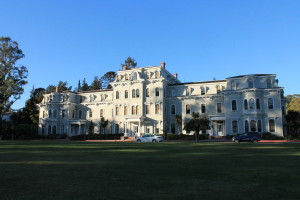After a brief Fall hiatus, the Telephone Outreach Program is back to help fundraise for the school and train students for phone calls.
According to the Mills College website, the Telephone Outreach Program (TOP), which began in 2005, contacts nearly 20,000 members of the Mills community by phone every year. In the 2014-15 school year, they managed to raise $164,369 with 18 student callers. This semester, the program consists of an eight person staff, one student supervisor and a main supervisor, after their Fall 2015 hiatus and Spring 2016 revamping.
Maddie Davis, the student shift supervisor at TOP, explained why TOP had a temporary hiatus Fall 2015.
“We had departmental changes, people were laid off and chose to leave, there was advancement and we didn’t have our computer programs,” Davis said. “It was largely based on turnover.”

Amber Morley, the program’s new supervisor, started working there in January. Morley’s job used to be six different people, according to Davis.
In order to start up the program again in the spring semester, they piloted a smaller team and had no computer system.
“Last semester, we would print out everyone’s hard copies of information and that’s how we would call every single person. It was a lot of paper,” Davis said. “We really wanted to get the program up and running again because we felt the lack of it as a department.”
Amidst all of the struggle in trying to restart their program, they raised $72,113 last spring with only four student callers.
The benefit of the program isn’t always just financial. Many students in the program learn how to maneuver difficult situations, as well as learn about Mills’ history. Olivia Hernandez, a returning caller in the program, expressed the difficulties of managing neutrality with alumni who have different views than current Mills students.
“We call a lot alumni who graduated in the 40s and 50s so their perspectives on things since they’ve been at Mills is … different,” Hernandez said. “We call a lot of people who have racist or homophobic feelings and those are hard to call because if you don’t share those ideals, it’s really hard to maintain neutrality without compromising your own ideas.”
Sydney Van Sinden, a junior caller who has been in TOP for a year, enjoys the anecdotes that alumni will give.
“It’s cool talking to alumni who are from important historical moments in Mills’ history, like talking to women who were doing the protests in the 90s,” Van Sinden said. “I talked to a woman once who remembered why they closed the back gate.”
Hernandez remembers interesting moments from her calling. In one phone call, an alum was teaching Hernandez how to sneak out of Mills because at that time, Mills dorms had curfews.
“They went to school during a very different time, but they were college students too, so you find a lot of common ground with them,” Hernandez said.




